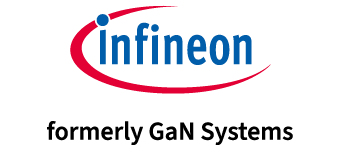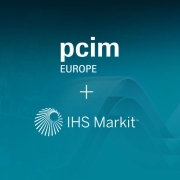Article: “The power semiconductor market remains buoyant- Highlights from PCIM Europe 2018”
This article was originally written by Richard Eden (Principal Analyst, Power Semiconductors) and published by IHS Markit on June 20, 2018.
Highlights
- In 2017, many suppliers reported that the discrete power semiconductor industry saw its best growth since 2012. The increase was witnessed strongly across many sectors, which was led by automotive applications. Calendar year 2018 looks likely to be another good year, but growth will not quite match 2017’s record levels. On the other hand, a minority of manufacturers are predicting that 2018 will exceed 2017 levels.
- The constrained supply chain for certain commodity products, such as MOSFETs, thyristors, and rectifiers, which started early in 2017, continues today. Many semiconductor manufacturers have been actively adding factory production capacity to alleviate the problem, but the most optimistic are predicting lead-times to get back to normal later in 2018. In contrast, the more pessimistic suppliers expect long lead-times to continue well into mid-2019, if not longer.
- The shortages of 6-inch and 8-inch diameter silicon wafers, that were affecting production of commodity mixed-signal ICs last year, also show no signs of resolution.
- These supply chain problems are clearly not short-term issues, which will be resolved soon. However, IHS Markit anticipates slowing demand for power semiconductors in 2019, which should help the situation to get back to normal next year.
Insights on Power Modules
- In comparison with the larger market for discrete power semiconductors, the power module market appeared to grow ever faster in 2017. The market for lower power, discrete semiconductors is usually more dynamic than that of higher power products, such as power modules. Several module manufacturers commented that they are hopeful that that market pick-up of 2017 will continue through 2018 and beyond. New high-power projects usually take longer to get started because they typically have longer design cycles and are often government-sponsored infrastructure schemes, so market cycles of growth and decline can last longer.
- The shortages of discrete power semiconductors mentioned above are also affecting the independent power module assembly companies. The module assembly companies rely on semiconductors from third-party suppliers, many of which are seeing long lead-times and production allocation.
- The introduction of fifth-generation (5G) mobile communication infrastructure presents an opportunity for power semiconductors. To ensure good wireless internet coverage required by personal mobile phones, connected vehicles (V2X), and industrial IoT users alike, 5G basestations should be more numerous than 4G basestations. They are also likely to use up to six times as many discrete semiconductors than the average 4G basestation. Furthermore, it is very likely that each basestation will use envelope tracking in each of its RF power amplifiers, and there could be up to 64 power amplifiers per basestation. Each envelope tracking circuit will require a control IC and a high-speed power switch/transistor.
- Another application sector that was increasingly apparent at the show was battery- and electric-vehicle charging infrastructure. Electric “petrol pump” charging stations were visible on several stands, and were mentioned as target applications in the publicity from several manufacturers, particularly for discrete Silicon Carbide (SiC) power semiconductors and hybrid SiC power modules. The key growth area for this application is Fast DC Charging, installations of which are expanding rapidly in China, in particular.
SiC power revs up for an automotive future
- The number of SiC power semiconductor products on show at PCIM continues to grow. Leading SiC suppliers, such as Wolfspeed (Cree), ROHM Semiconductor, Infineon Technologies, Littelfuse, Microsemi, ON Semiconductor, STMicroelectronics, Sumitomo Electric, and United Silicon Carbide were showing their latest generation of products, many of which were qualified for automotive applications.
- Elon Musk’s recent announcement that the new Tesla “Model 3” electric car will use SiC devices in the inverters of all of its motor drives has refocused the power semiconductor market on automotive Wide Band Gap (WBG). New SiC products on view at PCIM Europe included the following. Wolfspeed, (a Cree Inc. company), announced its new third generation 1200V SiC MOSFETs to power the drivetrain of electric vehicles (EVs). Infineon Technologies presented its first automotive-qualified CoolSiC™ SiC Schottky diode family. ON Semiconductor demonstrated its developments in Wide Band Gap (WBG) technology with its range of SiC, Gallium Nitride (GaN) and Gate Driver devices. Microsemi Corporation announced its expanding SiC MOSFET and SiC diode product portfolios (including AEC-Q101 automotive-qualified devices) and launched its extremely low inductance package for SiC MOSFET power modules. Lastly, Littelfuse showed the latest products from its investment in Monolith Semiconductor, as well as those Si products from its recent acquisition of IXYS Semiconductor.
- The most interesting SiC news from ROHM Semiconductor was that it is building a new SiC device fab, ROHM Apollo Fukuoka. Construction will start in February 2019, for completion at the end of 2020, with the intention of increasing ROHM’s SiC production capacity dramatically.
GaN power developments continue to make progress
- The number of GaN power semiconductor products at PCIM is also increasing. Efficient Power Conversion Corporation (EPC) joined other leading GaN power semiconductor suppliers, such as 氮化镓系统 (GaN Systems), Transphorm, Exagan, Infineon Technologies, Panasonic and VisIC Technologies for the first time. Monolithic GaN system IC company Navitas, Inc., contributed conference papers, but did not exhibit at the trade show.
- One of the most interesting pieces of news released at PCIM Europe was the announcement that 氮化镓系统 (GaN Systems) and ROHM Semiconductor will enter into a co-operation agreement. As I interpret the agreement, in the short term, 氮化镓系统 (GaN Systems) will supply products for ROHM to badge and sell to its (mainly Japanese) customers. In the longer term, ROHM will manufacture 氮化镓系统 (GaN Systems)’ designs on its existing silicon fab, offering customers a production second-source. Later, ROHM will gain access to 氮化镓系统 (GaN Systems)’ material and product development expertise, and 氮化镓系统 (GaN Systems) will take advantage of ROHM’s manufacturing knowledge to jointly develop new products and optimize production.



